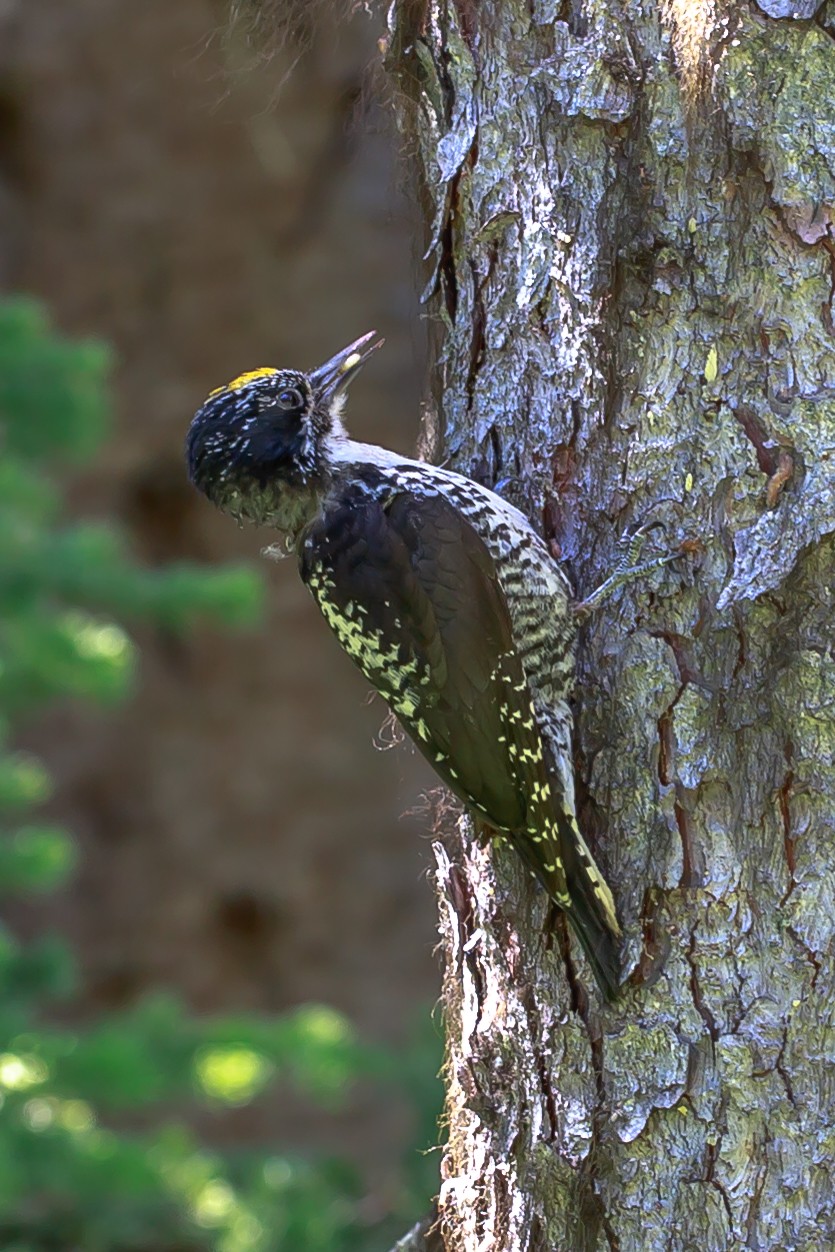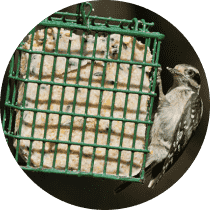American Three-toed Woodpecker
A species of Three-toed woodpeckers Scientific name : Picoides dorsalis Genus : Three-toed woodpeckers
American Three-toed Woodpecker, A species of Three-toed woodpeckers
Botanical name: Picoides dorsalis
Genus: Three-toed woodpeckers
Content
Description People often ask General Info
 Photo By Murray Foubister , used under CC-BY-SA-2.0 /Cropped and compressed from original
Photo By Murray Foubister , used under CC-BY-SA-2.0 /Cropped and compressed from original Description
This woodpecker has a length of 21 cm (8.3 in), a wingspan of 38 cm (15 in), and an average weight of 55 g (1.9 oz); its maximum lifespan in the wild is 6 years. It closely resembles the black-backed woodpecker, which is also three-toed. Until recently, it was considered to be the same species as the Eurasian three-toed woodpecker, P. tridactylus. Adults are black on the head, wings and rump, and white from the throat to the belly; the flanks are white with black bars. The back is white with black bars and the tail is black with the white outer feathers barred with black. The adult male has a yellow cap. 
Size
20-23 cm (8-9 in)
Life Expectancy
6 years
Nest Placement
Cavity
Clutch Size
3 - 7 eggs
Number of Broods
12 - 14 days
Feeding Habits
American Three-toed Woodpecker's diet primarily consists of beetle larvae from various families, particularly Scolytidae, and includes Cerambycidae, Buprestidae, Pythidae, and Cleridae, as well as ant larvae, moth pupae, and spiders. American Three-toed Woodpecker typically forages on the trunks or snags of small, often dead or dying, trees by flaking off bark. Higher tree foraging may occur when in the presence of the Black-backed Woodpecker. Occasionally, american Three-toed Woodpecker creates sapwells to consume sap.
Habitat
American Three-toed Woodpecker predominantly resides in mature and old-growth coniferous forests, often in regions that have experienced disturbances like windstorms, fires, or floods. These habitats provide an abundance of dead or dying trees, crucial for feeding and nesting due to the prevalence of insect infestations. American Three-toed Woodpecker favors varying altitudes and climates encompassing boreal to mountainous areas and boggy zones with decaying vegetation. Their habitat includes a range of conifers like spruce, fir, pine, and larch. They are notably sparse or absent in harvested forestlands.
Nest Behavior
Both genders of american Three-toed Woodpecker share nest excavation, with the male taking the lead early and the female finishing as the nest nears completion. Nesting activities include both parents caring for the eggs and offspring post-hatching.
Nest Characteristics
The nest cavities by american Three-toed Woodpecker are usually positioned in small dead conifers, albeit sometimes in living ones, at relatively low heights. Excavation is done by both sexes, lined with wood chips, featuring an entrance of roughly 1.6 inches in diameter, with the cavity size around 4 inches across and 11 inches deep.
Dite type
Insectivorous
People often ask
General Info
Feeding Habits
Bird food type
Bird Feeder Type

Suet Cage
Behavior
American Three-toed Woodpecker typically forages solo, except during breeding seasons when it partners up. This period invites more vocalizations and joint nesting tree selection, often leading to long-term pair bonds. Daily activities include relentless foraging, with unique displays of crest raising and bill pointing for territory defense. Habitat-wise, american Three-toed Woodpecker thrives in newly burnt forests, taking advantage of the ample food supply which may even reduce territorial spacing. Both genders engage in nest-making, egg incubation, and chick rearing. American Three-toed Woodpecker shows submissive behavior to its larger cousin, swiftly vacating when confronted, underscoring its place in the avian hierarchy.
Species Status
Not globally threatened.
Scientific Classification
Phylum
Chordates Class
Birds Family
Woodpeckers Genus
Three-toed woodpeckers Species
American Three-toed Woodpecker